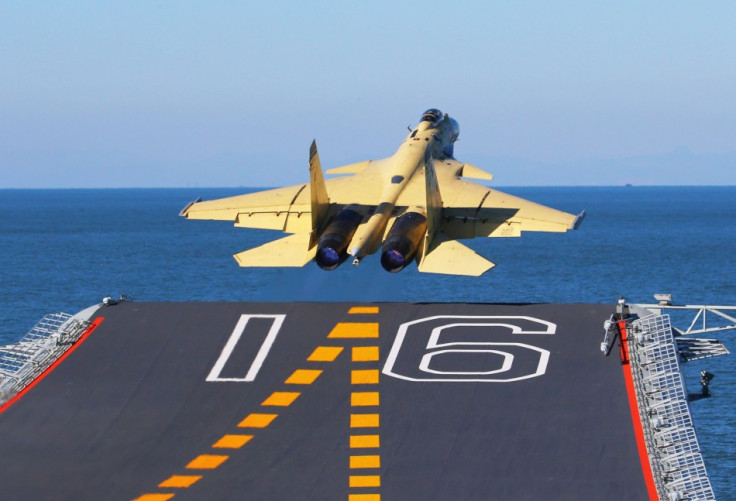China Lands Fighter Jet on Liaoning Aircraft Carrier
Liaoning is the refurbished version of the former Soviet vessel Varyag.

China successfully landed a fighter jet on its first aircraft carrier, the Liaoning, on Sunday 25 November, a move seen as a projection of its military superiority over its Asian neighbours.
The Chinese-made J-15 made a successful landing and take-off on the former Soviet carrier during recent exercises, the Chinese defence ministry said. The tests employed the highly technical cable landing technology.
J-15 has comprehensive capabilities and is able to carry multi-type anti-ship, air-to-air, air-to-ground missiles as well as precision guided missiles, according to a Xinhua report. It is believed to have capabilities similar to the Russian Su-33 jet and the US F-18.
The 300m (990ft)-long Liaoning entered service in September, since when the crew has completed over 100 training and test programmes.
A Chinese company with links to China's People's Liberation Army (PLA) bought the stripped-down vessel, formerly known as Varyag, from Ukraine nearly 10 years ago. It was originally planned for the Soviet navy in the 1980s but was never completed.
The company earlier claimed it wanted to convert the vessel in to a floating casino in Macau. The vessel underwent massive refurbishment at the port of Dalian and in June 2011, China confirmed it was to be the country's first aircraft carrier.
Click here for the video of the J-15 taking off and landing on the Liaoning.
China's Sea Disputes
China and Japan are embroiled in a row over the ownership of a group of islands in the East China Sea known as Senkaku in Japan and Diaoyu in China. The dispute over the islands has increased tensions in the region and has disrupted trade, business and tourism between the two nations.
China is also engaged in territorial disputes with the Philippines, Vietnam, Brunei and Malaysia in the South China Sea.
China recently printed a map in its new passports showing the entire South China Sea which, according to the Philippines, includes parts of its territory and maritime domain.
The 3.5 million-square-kilometre area is rich in maritime and energy resources, and is a major shipping route.
© Copyright IBTimes 2025. All rights reserved.





















